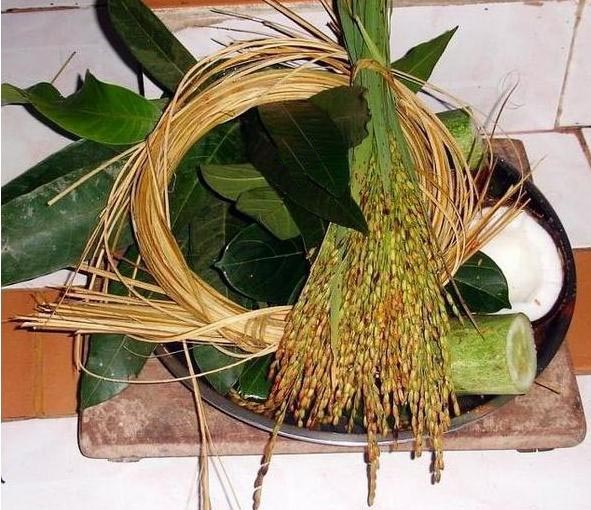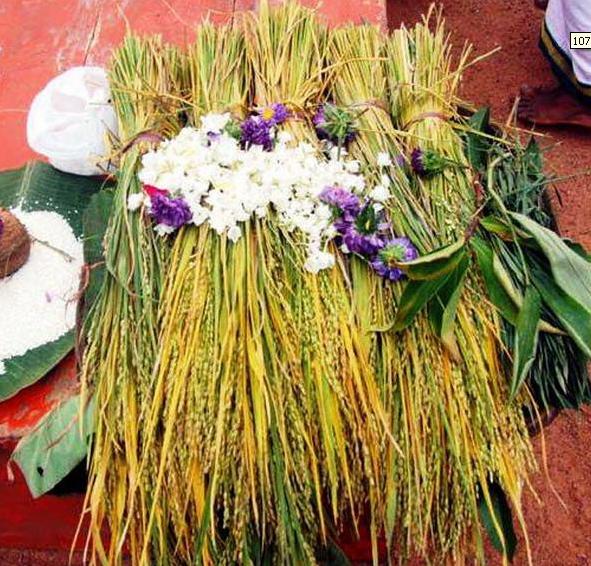17th of Sept 2015 in some parts of the coastal region “Thene Habba” (Koral Parba) is also being celebrated. This particular ‘Habba’ I mean festival is being celebrated in different unique ways by the people of different coastal regions but though the objective of the celebrations is the same and you may find some variations in the way of celebrations in different parts. This Habba is being also called in different names as “Hosthu” Pudvar (Puddar),’ill Dinjavune’(filling house with grains) and ‘Koral Parba’.In Konkani it is called as ‘Monthi Fest’
“Koral” is in fact a Tamil word “Korali”, a synonym for a millet called “thinai”. This Koral is known as ‘thene’ in Tulu which is the stunted Tamil word “thinai”, the millet. The Koral parba in Tulu is called Thene Habba – habba is corrupted from Pabba, parba, parva.
What is ‘Thene Habba’(Koral Parba)?:- Most of our festivals are related or connected to our crop (Harvest).”Thene Habba”(Koral Parba) is one such festival, being celebrated widely across the coastal region and other parts before the harvest of first crop of the season. This festival is celebrated in September, before the harvest of ‘Enel’ crops. Usually, it is celebrated on the next day of Sankramana in September i.e. the first day of Nirnal month as per the Tulu calendar. If they fail to perform Pudvar on that particular day, they celebrate it on the first Friday of Nirnal month.
All members of the family take holy bath early in the morning and clean their house and yard. They also wash the equipment used regularly both in cultivation and in household activities. Even before consuming any food, the male members of the family apply oil to their head and body and chewing betal leaves they go for their fields with sickle ( curved iron instrument) to bring Thene (ear or spike of corn). Head of the family first offer his prayer to the crop and to the field and cut the first ‘Thene'(Koral-grown ear or spike of the corn). All other members, including small girls follow him and take a handful of ‘Thene’ each. The number of so collected ear of corns (Thene) should be odd i.e. 3,5,7 or 9. When they bring home the ‘Thene’, they utter ‘Poliyo Poli’ (praying for opulence and prosperity)
Then they keep the so called ‘Thene’ brought with so much of devotion along with other members of the family keep it in front of the ‘Tulasi’Katte or Kuladevatha on the banana leaf along with all the cleaned equipments used regularly for agricultural purpose and household activities, the different kind of leaves such as mango,bamboo,jack fruit, betel leaves, skin of Aaladamara ( a type of tree filled with milk, resembling banyan tree-Daddal mara) traditional flowers, areca nut along with different types of vegetables grown in the field, and all members of the family collectively pray there for the prosperity of family members, house and crop. This is called ‘Hosthu or ill Dinjavune’.It is a ritual of adorning the Goddess Earth and paying gratitude to the food grains, mainly the paddy for opulence.
After finishing the rituals, they prepare coconut milk and add odd number of new rice and jiggery to it and consumed by all the members of the family.
Occasion.
Then they set all the leaves together one on the other along with ears of the corn and then tie all the important places in the house, poles, cowshed, household equipments, instruments, yokes, ploughs and, vessels
Then they cook the rice by putting odd number of new rice to it and take food together along with different types of dishes prepared for the occasion.
All the members of the family will be in pleasant and happy mood on this day.
Shekhar Moily



